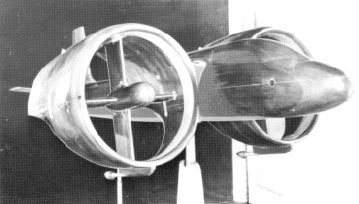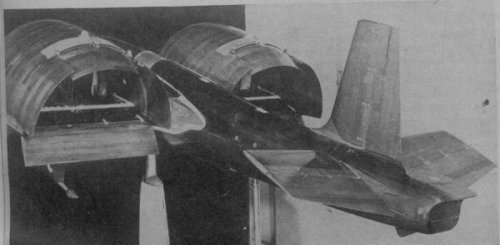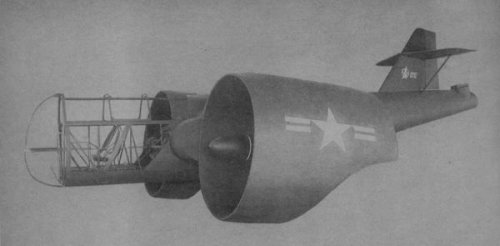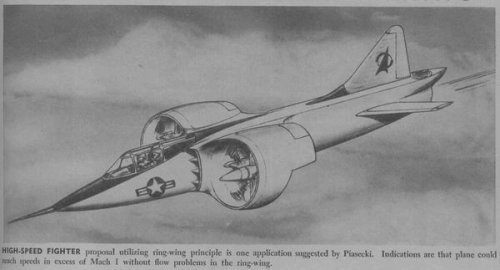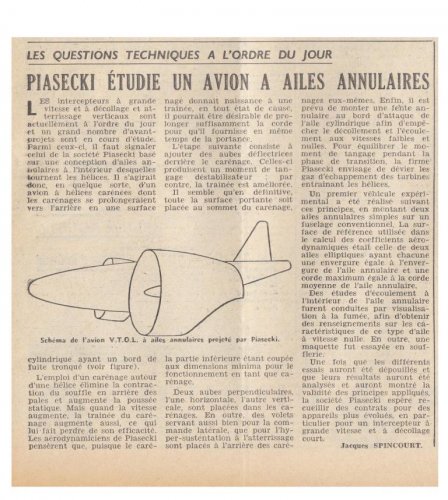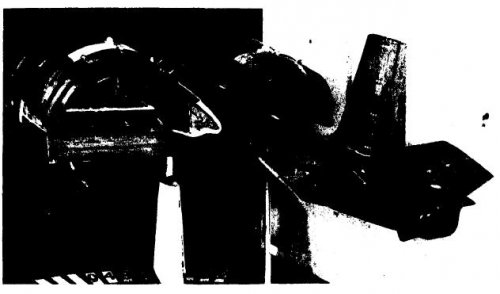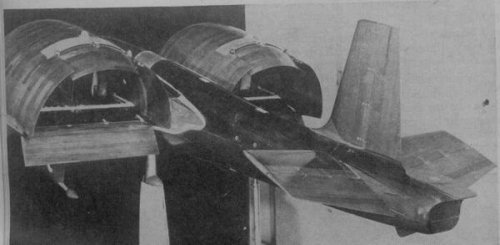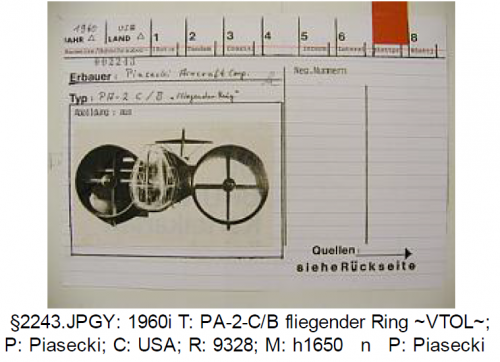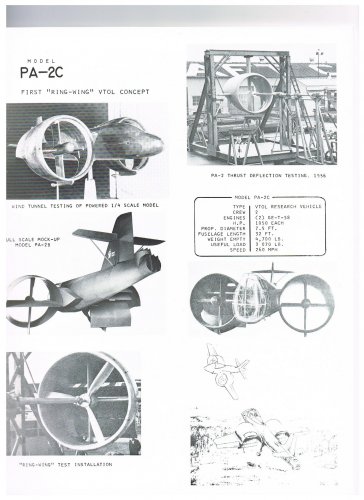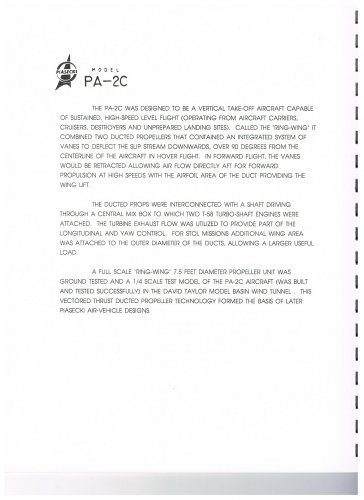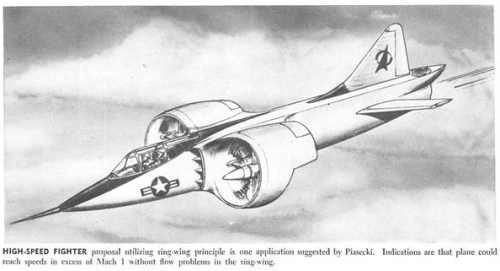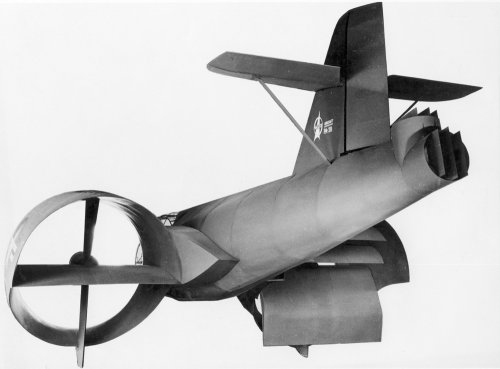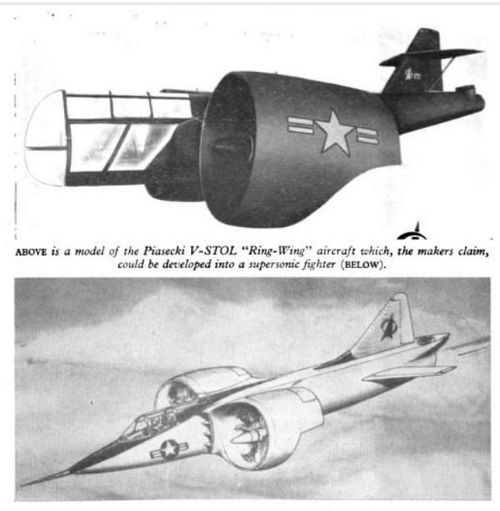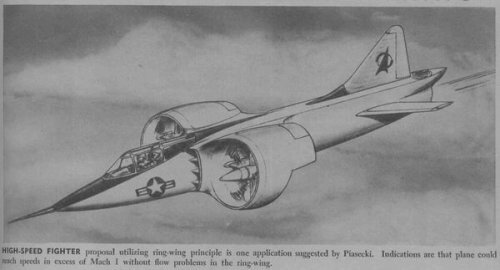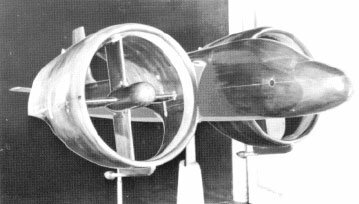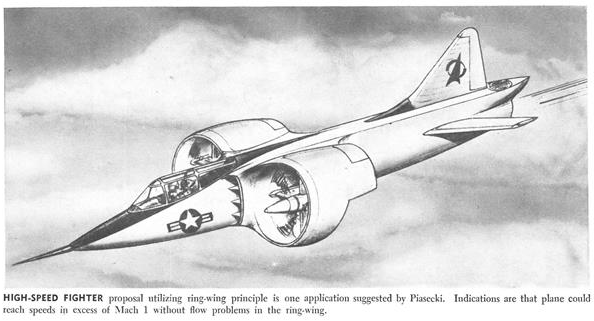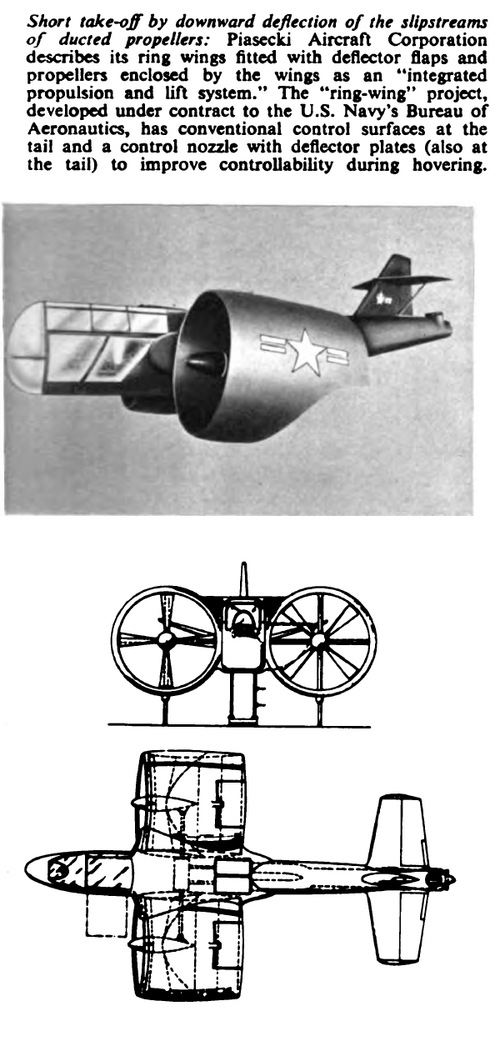That page is inaccurate.
1. Frank Piasecki bought the XR-1A in 1947, not 1949 as that page mentions.
2. Frank bought the XR-1A with the intention to flight test the old helicopter, (which he did for a time) and partly out of
sentiment, as he began his helicopter design career at Platt-LePage.
3. He grounded the XR-1A when he noticed that safely bailing out in flight, would be extremely risky at best. (His own words: "I'd have ended up like sliced salami" )
4. Frank brought the old helicopter to Essington, when he started Piasecki Aircraft. It sat outside for sometime getting vandalized by the local kids. (I have photos of the XR-1A airframe in Essington, including one in color)
5. The XR-1A fuselage was used strictly as a Mock-Up to show the basic layout of the concept.
The late John Schneider told me how they cut the pylons off the XR-1A, stripped the fabric off of the rear fuselage, and skinned the leftover air frame with painted sheets of cardboard. (John showed me the engineering book on the project in the latter 90s)
Piasecki photo of the PA-2B Mock Up http://www.piasecki.com/uav_pa2c_picture1_zoom.html
After the photos of the PA-2B Mock Up were taken, the XR-1A airframe and assorted parts were stored at Piac for a time until Frank's works manager got tired of walking around the stored parts, and had them cut up and hauled off to the dump, without telling Frank Piasecki.
Reportedly the rotor blades, rotor heads, swash plates, and transmission survived. The rotors, rotor heads and swashplates were said to have ended up at NEAM, though I've been unable to get anyone there to seriously look for the parts in sometime.
Frank Piasecki was said to have saved the transmission in his collection of parts.

